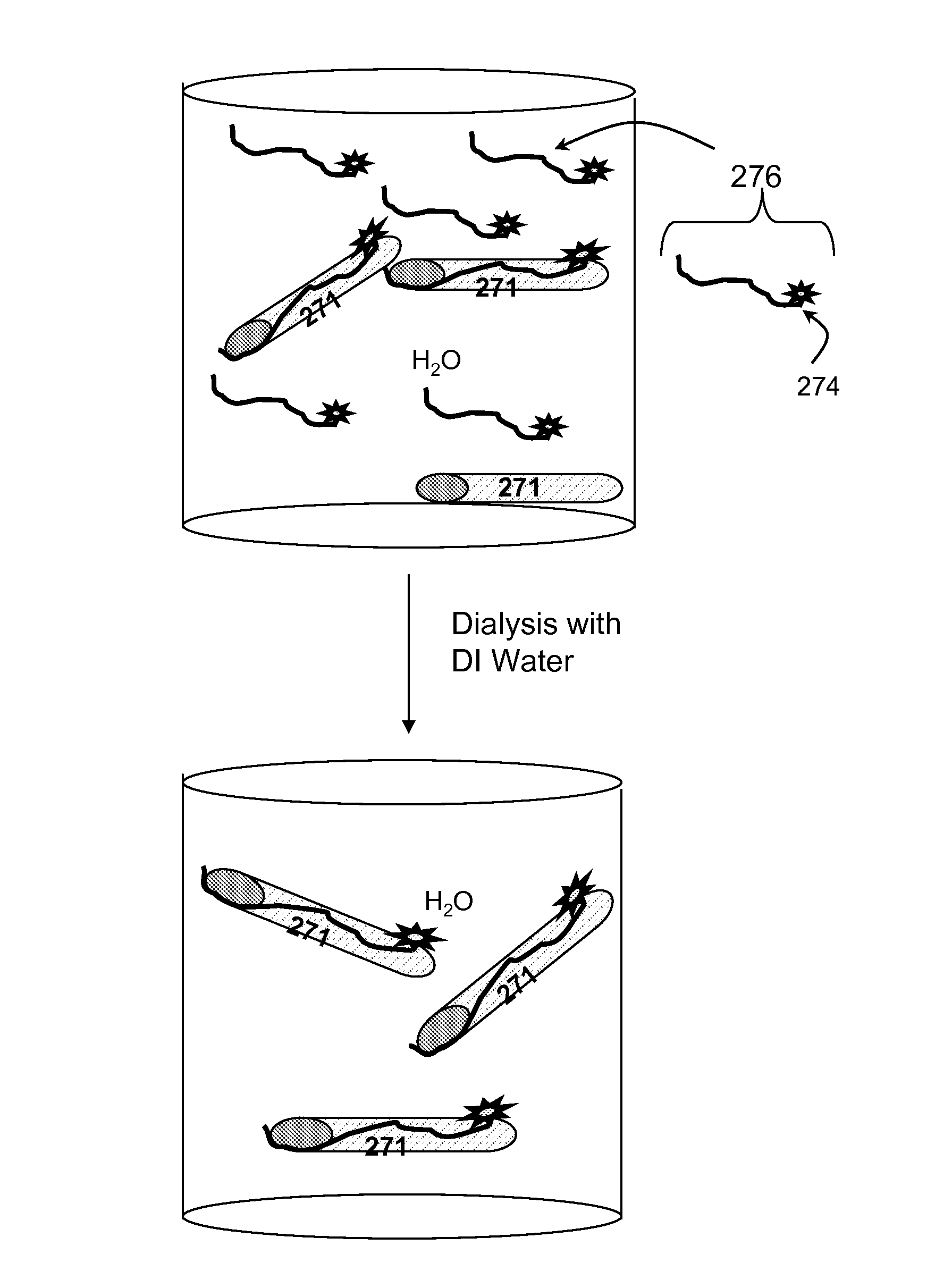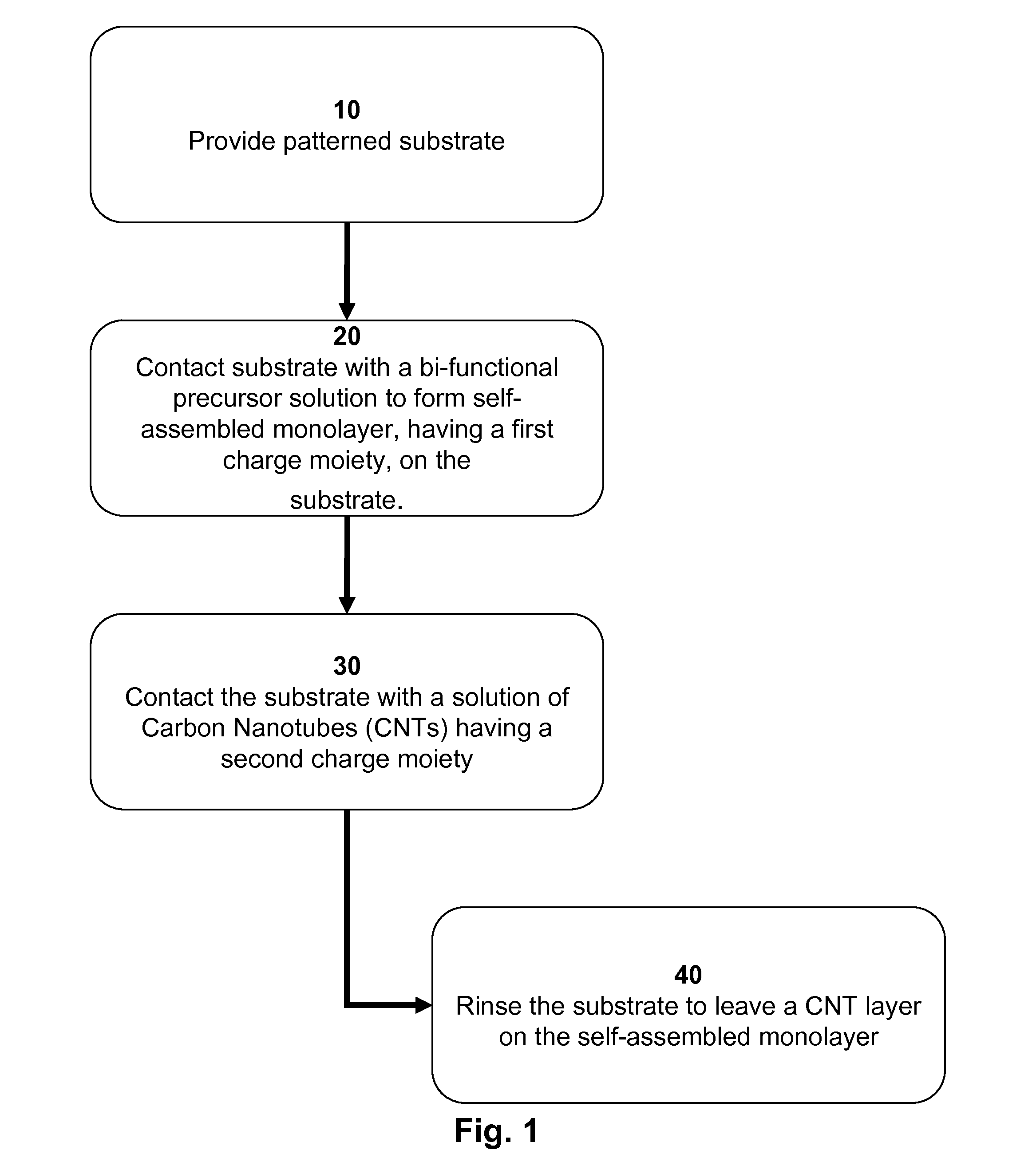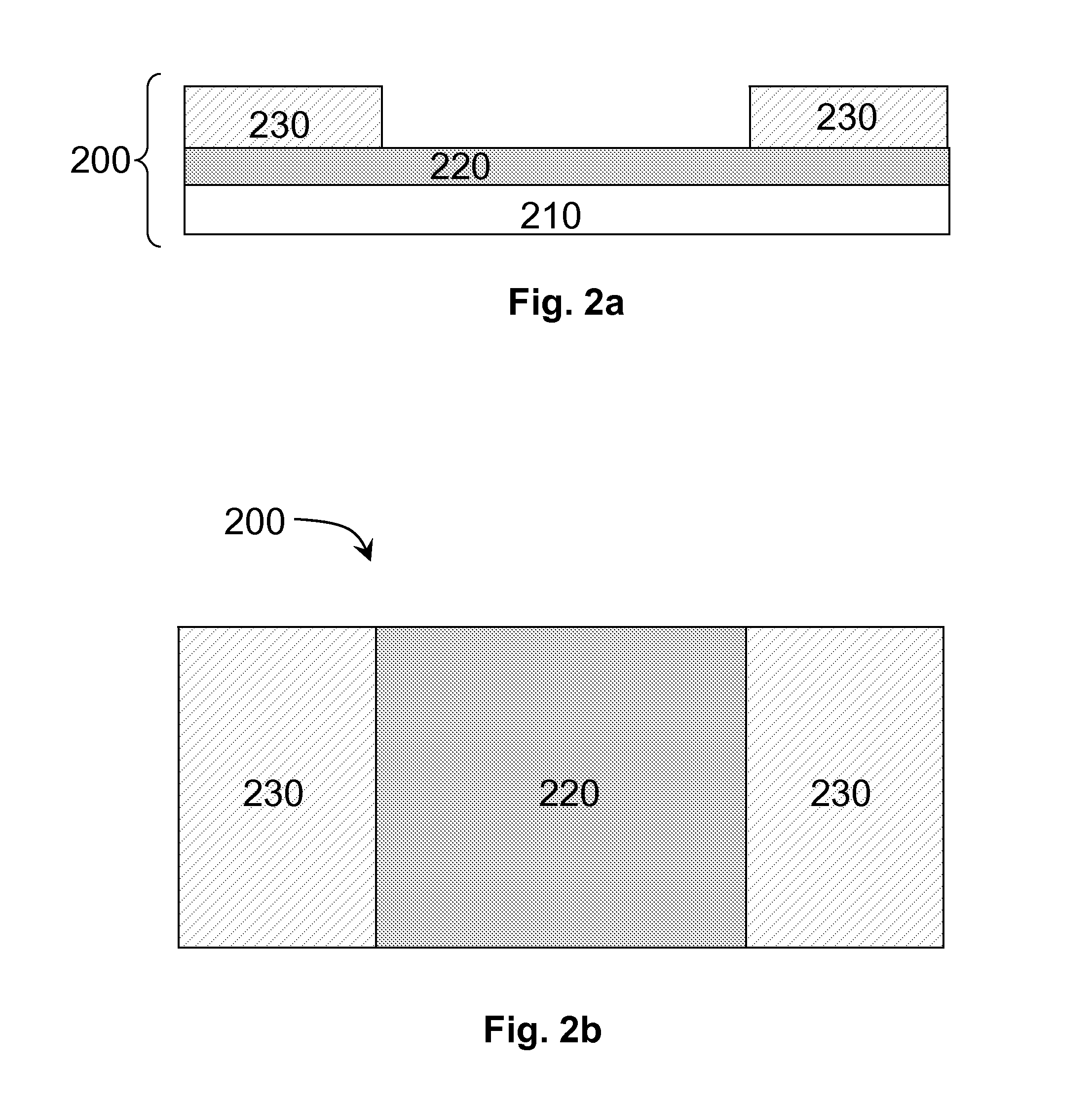Selective placement of carbon nanotubes via coulombic attraction of oppositely charged carbon nanotubes and self-assembled monolayers
a carbon nanotube and self-assembled technology, applied in the field of placing carbon nanotubes, can solve the problems of inability to reach recessed hydrophilic areas having small widths, undesirable bundled or multi-layered cnts, poor selectivity, etc., to achieve the effect of reducing the formation of multi-layer cnts or bundled cnts, reducing the formation of bundled cnts, and increasing the density of nanotubes
- Summary
- Abstract
- Description
- Claims
- Application Information
AI Technical Summary
Benefits of technology
Problems solved by technology
Method used
Image
Examples
example i
[0057]Positively charged bi-functional precursor molecules for self-assembly. Potassium cyanide (50 mg) was added to a solution of methyl isonicotinate (1.17 g, 0.01 mole) and 50% hydroxylamine in water (1.3 g, 0.02 mole) in 10 mL tetrahydrofuran and 5 mL methanol. After stirring the mixture at room temperature for 18 hours, the precipitate was filtered and washed with diethyl ether and dried to give analytically pure N-hydroxy isonicotinamide. The latter was added to 5% methyl iodide in methanol and stirred at room temperature for two days. Methanol was evaporated under reduced pressure and the solid residue was crystallized from ethanol resulting in pure 4-hydroxamido-N-methylpyridinium iodide.
example ii
[0058]Preparation of negatively-charged CNTs by functionalization. Nitrosonium tetrafluoroborate (12 mg, 1 mmole) was added to a suspension of methyl 4-aminobenzoate (15 mg, 1 mmole) in 5 mL of acetonitrile. The resulting solution was added drop-wise to an aqueous suspension of single-walled carbon nanotubes (1 mg) in water containing 1% sodium dodecylsulfate. After standing for 18 hours, the solution was centrifuged and the sediments were added to 10 mL of 10% methanolic potassium hydroxide solution. After stirring for 4 hours, 20 mL of acetone was added and the mixture centrifuged. The supernatant liquid was discarded and the sediment was dissolved in de-ionized water resulting in an aqueous solution of negatively charged carbon nanotubes.
example iii
[0059]Preparation of an aqueous dispersion of CNTs coating in with a monolayer of anionic surfactant. Dispersion of carbon nanotubes in 1% sodium dodecylsulfate was dialyzed with pure water for several days, during which fresh water was used after 24 hours. After several times dialyzing with fresh water, the solution inside the filter contains no free surfactant and all surfactants are attached to carbon nanotubes.
PUM
 Login to View More
Login to View More Abstract
Description
Claims
Application Information
 Login to View More
Login to View More - R&D
- Intellectual Property
- Life Sciences
- Materials
- Tech Scout
- Unparalleled Data Quality
- Higher Quality Content
- 60% Fewer Hallucinations
Browse by: Latest US Patents, China's latest patents, Technical Efficacy Thesaurus, Application Domain, Technology Topic, Popular Technical Reports.
© 2025 PatSnap. All rights reserved.Legal|Privacy policy|Modern Slavery Act Transparency Statement|Sitemap|About US| Contact US: help@patsnap.com



